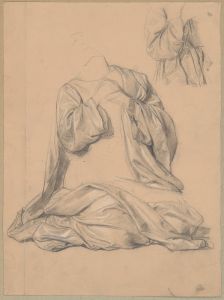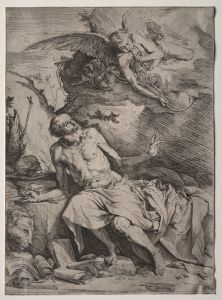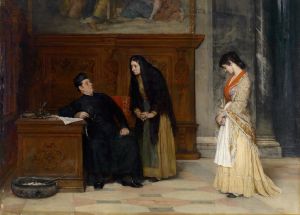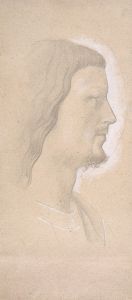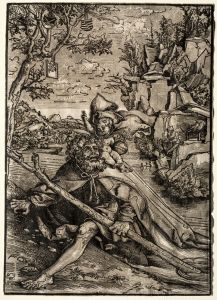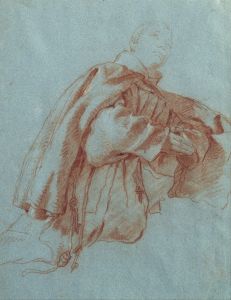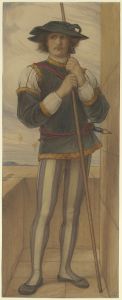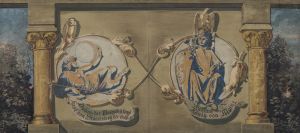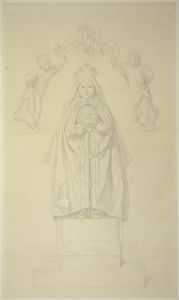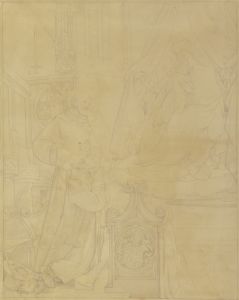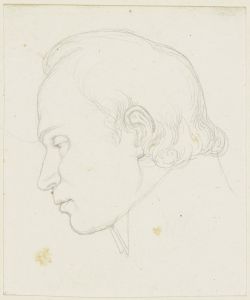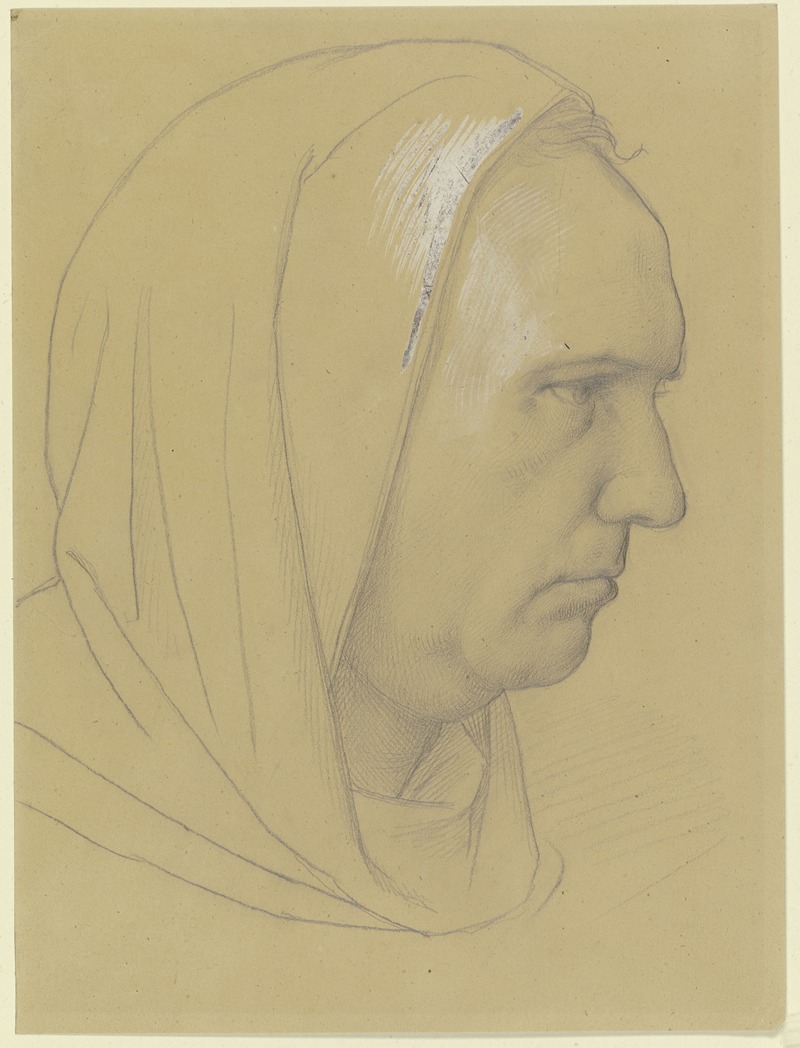
Head of Albertus Magnus
A hand-painted replica of Eduard von Steinle’s masterpiece Head of Albertus Magnus, meticulously crafted by professional artists to capture the true essence of the original. Each piece is created with museum-quality canvas and rare mineral pigments, carefully painted by experienced artists with delicate brushstrokes and rich, layered colors to perfectly recreate the texture of the original artwork. Unlike machine-printed reproductions, this hand-painted version brings the painting to life, infused with the artist’s emotions and skill in every stroke. Whether for personal collection or home decoration, it instantly elevates the artistic atmosphere of any space.
Eduard von Steinle was a prominent 19th-century German painter, known for his contributions to the Nazarene movement, which sought to revive honesty and spirituality in Christian art. One of his notable works is the "Head of Albertus Magnus," a painting that reflects his deep engagement with religious and historical themes.
Albertus Magnus, also known as Saint Albert the Great, was a medieval German Catholic bishop, philosopher, and theologian. He was renowned for his comprehensive knowledge of the natural sciences and his efforts to reconcile Aristotelian philosophy with Christian theology. Albertus Magnus was a significant figure in the intellectual history of the Middle Ages, and his works laid the groundwork for the scholastic tradition. He was canonized as a saint and later declared a Doctor of the Church, highlighting his lasting influence on Christian thought.
Eduard von Steinle's depiction of Albertus Magnus captures the essence of this influential figure. The painting focuses on the head of Albertus, emphasizing his intellectual presence and spiritual depth. Steinle's style, characterized by meticulous attention to detail and a serene, contemplative atmosphere, is evident in this work. The artist's use of light and shadow, along with his careful rendering of facial features, conveys a sense of wisdom and introspection, qualities associated with Albertus Magnus.
Steinle was a member of the Nazarene movement, which originated in the early 19th century among a group of German and Austrian artists. The Nazarenes aimed to revive the spiritual purity and simplicity of early Christian and Renaissance art. They often drew inspiration from religious subjects and sought to infuse their works with a sense of devotion and moral integrity. Steinle's "Head of Albertus Magnus" aligns with these ideals, as it not only portrays a significant religious figure but also embodies the movement's emphasis on spirituality and historical reverence.
The painting is an example of Steinle's ability to blend historical accuracy with artistic expression. While the exact date of the painting's creation is not widely documented, it is consistent with Steinle's broader body of work, which often explored religious and historical themes. His paintings were well-received during his lifetime, and he was regarded as a leading figure in the Nazarene movement.
Eduard von Steinle's contribution to art extends beyond his paintings. He was also a respected teacher and influenced a generation of artists through his work and teachings. His commitment to the ideals of the Nazarene movement and his dedication to portraying religious and historical subjects with sincerity and depth have left a lasting impact on the art world.
In summary, "Head of Albertus Magnus" by Eduard von Steinle is a testament to the artist's skill in capturing the intellectual and spiritual essence of historical figures. Through his meticulous technique and adherence to the principles of the Nazarene movement, Steinle created a work that continues to be appreciated for its artistic and historical significance.





